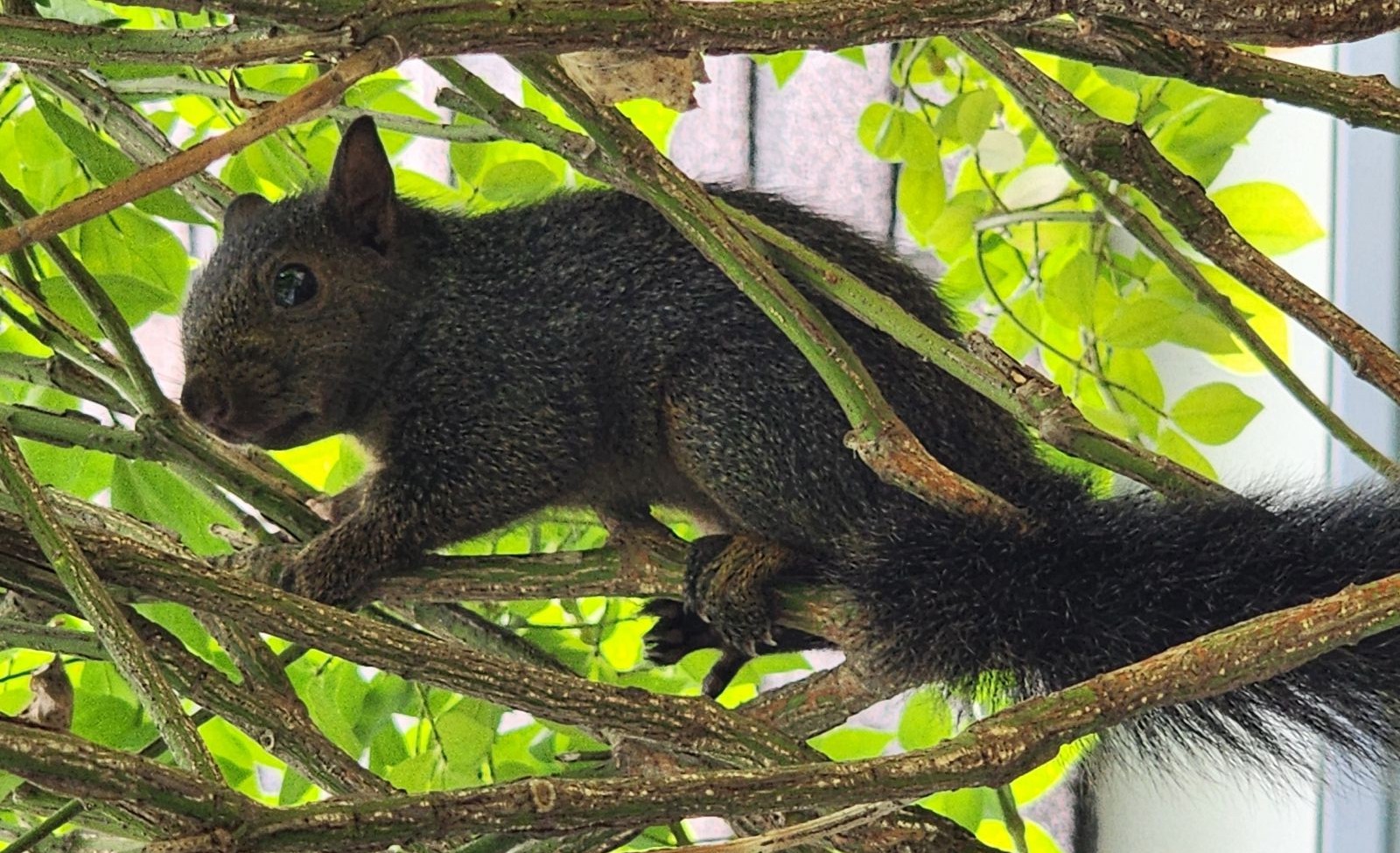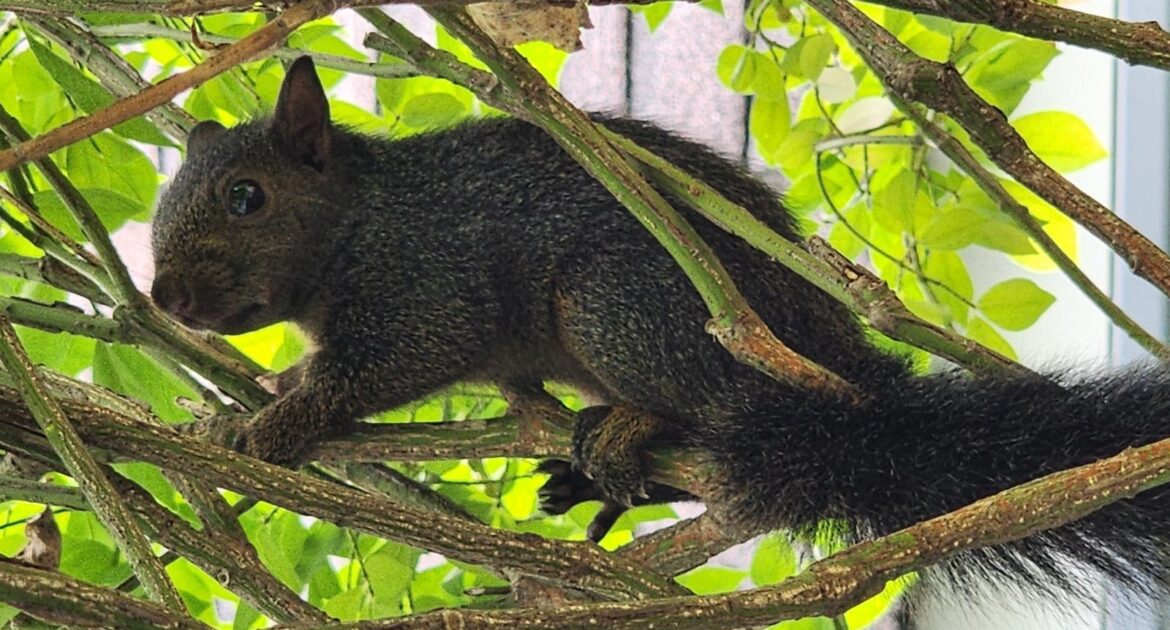If you’ve noticed unusual sounds coming from your attic or walls, it’s possible that squirrels have made themselves at home. From scurrying to squeaking, squirrel communication sounds can indicate a variety of behaviors. Understanding these noises—and what they might mean—can help you address the problem before damage is done.
At Skedaddle, we specialize in humane wildlife control, and we’ve helped countless Columbus homeowners, including those near Franklin Park Conservatory, identify and resolve squirrel-related issues.
Squirrel Communication Sounds
Squirrels are surprisingly vocal creatures with a wide range of sounds used to communicate with one another. These sounds aren’t just random noises; they carry distinct meanings based on the squirrel’s needs, emotions, or environment. Here are some common squirrel sounds and what they typically signify:
- Chirps and Muk-Muks: Squirrel kits (babies) often make these soft, high-pitched noises to call their mother when they’re hungry or in distress.
- Kuk-kuk-kuks and Quaas: Adult squirrels use these warning calls to alert others of predators. The kuk is a shorter bark, while quaas are longer, whining sounds meant to signal danger.
- Seet-Barks: These calls are specific to aerial predators like hawks or owls. They’re sharp and urgent, warning others to take cover.
- Rattles and Screeches: These loud, aggressive noises are often used when defending territory or warding off intruders.
- Muk-Muks in Mating Season: Male squirrels make a soft, purring muk-muk sound to signal interest in a mate.
Understanding these sounds in your yard or home can offer insight into squirrel activity. However, hearing these sounds indoors, such as in your attic or walls, is often a sign that squirrels have invaded your living space.
Squirrel Noises in Your Home
When squirrels enter your home, they rarely stay quiet. Their movements and vocalizations can often give away their presence before you even see them. Here are the most common noises they make inside homes:
- Scurrying and Scratching
Squirrels are active creatures, especially during the early morning and late evening. You might hear light running, scurrying, or scratching noises as they move across insulation, walls, and ceilings. They often settle into attics because these areas mimic their natural treetop habitats.
- Rolling Noises
If you hear odd rolling sounds above you, squirrels may be storing nuts or acorns in a nesting site. Rolling noises are often accompanied by rustling as they arrange their food supplies.
- Gnawing and Chewing Sounds
Squirrels have powerful teeth that never stop growing, so chewing is essential for keeping them filed down. Inside homes, squirrels will gnaw on wood, wires, and even aluminum. This can result in repetitive grinding or biting sounds, which can be particularly concerning due to potential fire hazards from chewed electrical wiring.
- Squeaks and Chirps
Squirrel kits are often the source of faint squeaking or chirping sounds. If you hear these noises, especially during the spring or late summer, it’s likely a sign of a family group nesting within your home.
If you’re hearing new noises in your home, it’s essential to act promptly. Squirrels are not only noisy but also capable of causing significant structural damage.
What Squirrel Sounds Mean
Decoding squirrel noises in your home can help you understand their behavior and assess the level of urgency:
Repetitive Scratching or Scuttling
This often indicates squirrels searching for entry points or exploring their new surroundings. It may mean they’ve recently entered your attic or walls and are establishing a nesting site.
Sharp Barking or Chattering
Barking or chattering sounds can be a sign of territorial defense. If you have multiple squirrels, they may be competing for space within your home, adding to the noise and potential damage.
Rustling and Soft Squeaks
These sounds often point to nesting activity. If there are soft squeaks or those muk-muk calls we mentioned earlier, it’s likely that babies are present. This is common during the birthing seasons in spring and late summer.
Loud Thuds
Sudden thudding noises can indicate squirrels jumping from branch to roof or moving large items like nuts within an attic space.
If these sounds become consistent or increase, it’s a sign squirrels are settling in and may already be causing significant damage.
Squirrel Activity Around Columbus
Squirrels are a common sight in Columbus, with gray and red squirrels thriving in urban and suburban neighborhoods. Properties near tree-lined spaces like Franklin Park often see an increase in squirrel activity, especially in spring and fall. Squirrels are resourceful and adept at finding entryways into attics and wall spaces, chewing through materials like wood, vinyl, and aluminum to create access points.
Whether you live in Olde Towne East, Bexley, or Upper Arlington, it’s important to regularly inspect your home for potential signs of squirrel activity, especially during breeding seasons in early spring and late summer when they seek safe spaces to raise their young.
Steps to Address Squirrel Noises in Your Home
If you’re hearing squirrel noises in your home, here’s what you should do:
- Listen and Identify
Pay attention to when and where you hear the noises. Morning and evening activity typically points to squirrels.
- Inspect Entry Points
Look for visible signs of damage, such as gnawed wood, chewed vents, or loose siding. Remember, squirrels can squeeze through holes as small as two inches.
- Contact a Professional
Squirrels are highly adaptable and persistent, making them difficult to remove without professional help. At Skedaddle, we use humane techniques to safely remove squirrels and prevent future intrusions.
- Prevent Future Entry
Once squirrels are removed, ensure entry points are sealed with durable materials such as galvanized steel screening. Deodorize the area to remove pheromone scents that may attract other squirrels.
Taking action early not only protects your home but also minimizes the risk of health hazards associated with squirrel activity, such as ticks, fleas, and bacteria from droppings.
Choose Skedaddle for Humane Squirrel Removal
At Skedaddle, we specialize in providing professional and reliable squirrel removal services that prioritize the well-being of both your home and the animals involved.
- Use humane removal techniques to safely handle squirrel intrusions without harming the animals.
- Conduct a thorough inspection to identify all entry points and assess the infestation.
- Remove squirrels using safe, innovative methods.
- Install exclusion materials to prevent future access.
With over 30 years of experience in wildlife removal, Skedaddle is committed to delivering service that is effective, compassionate, and tailored to protect your property. Our team ensures every step of the process is handled with care and precision, giving you peace of mind and protecting the ecosystem. Choose Skedaddle for a solution that respects both your home and the natural world.
Why It’s Time to Act
Squirrels may seem harmless when they’re in your backyard, but once they move indoors, they pose serious risks to your home. Chewing damage, contaminated insulation, and nesting debris can lead to costly repairs. By recognizing squirrel communication sounds and noises in your home, you can take practical steps to address the issue before it escalates.
If you’re hearing unusual sounds in your attic or walls, contact us at Skedaddle. Our experienced team provides humane squirrel removal services, ensuring your home is secure and your mind is at ease. Don’t wait—give us a call today to keep your home safe and squirrel-free.




